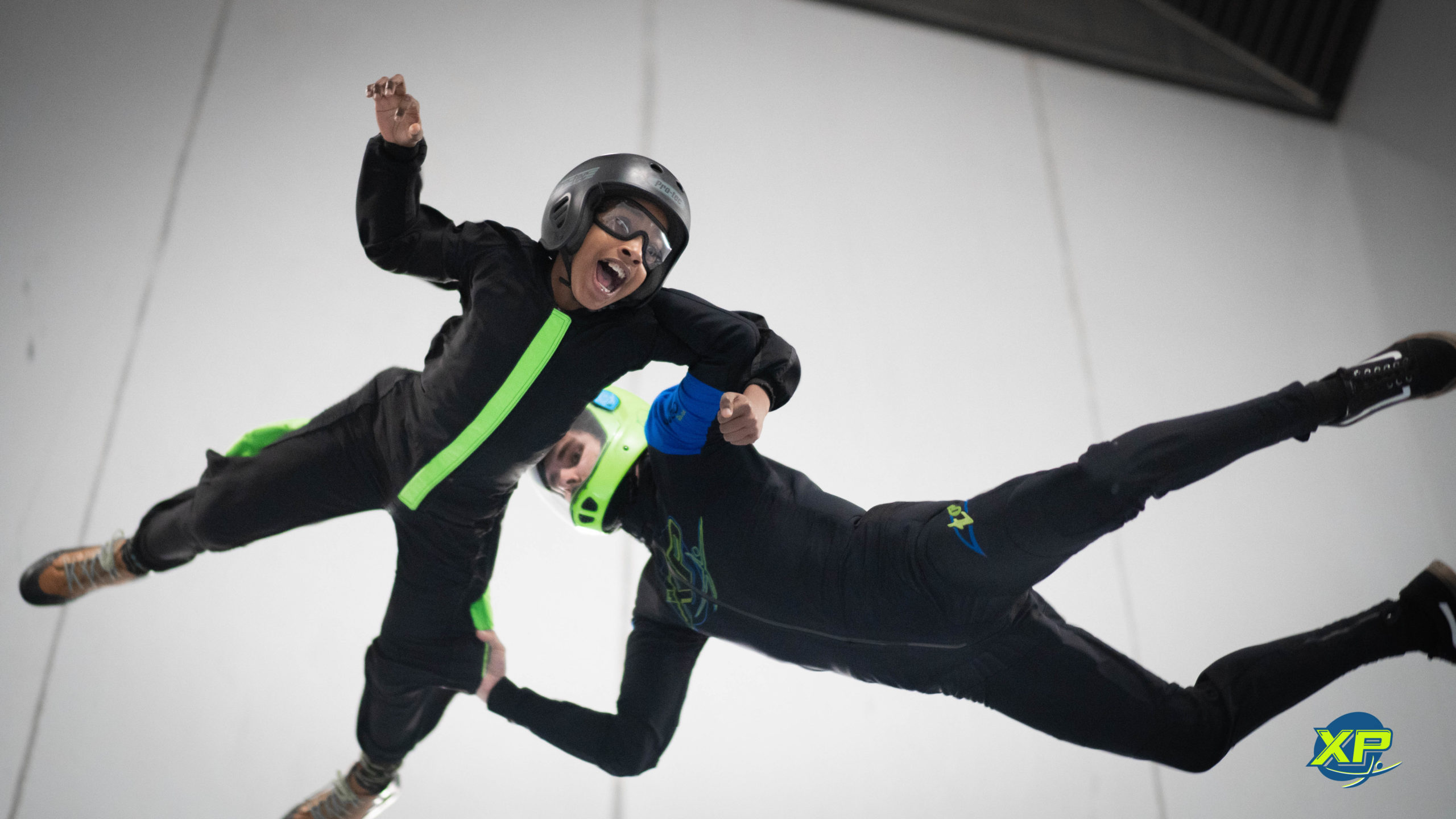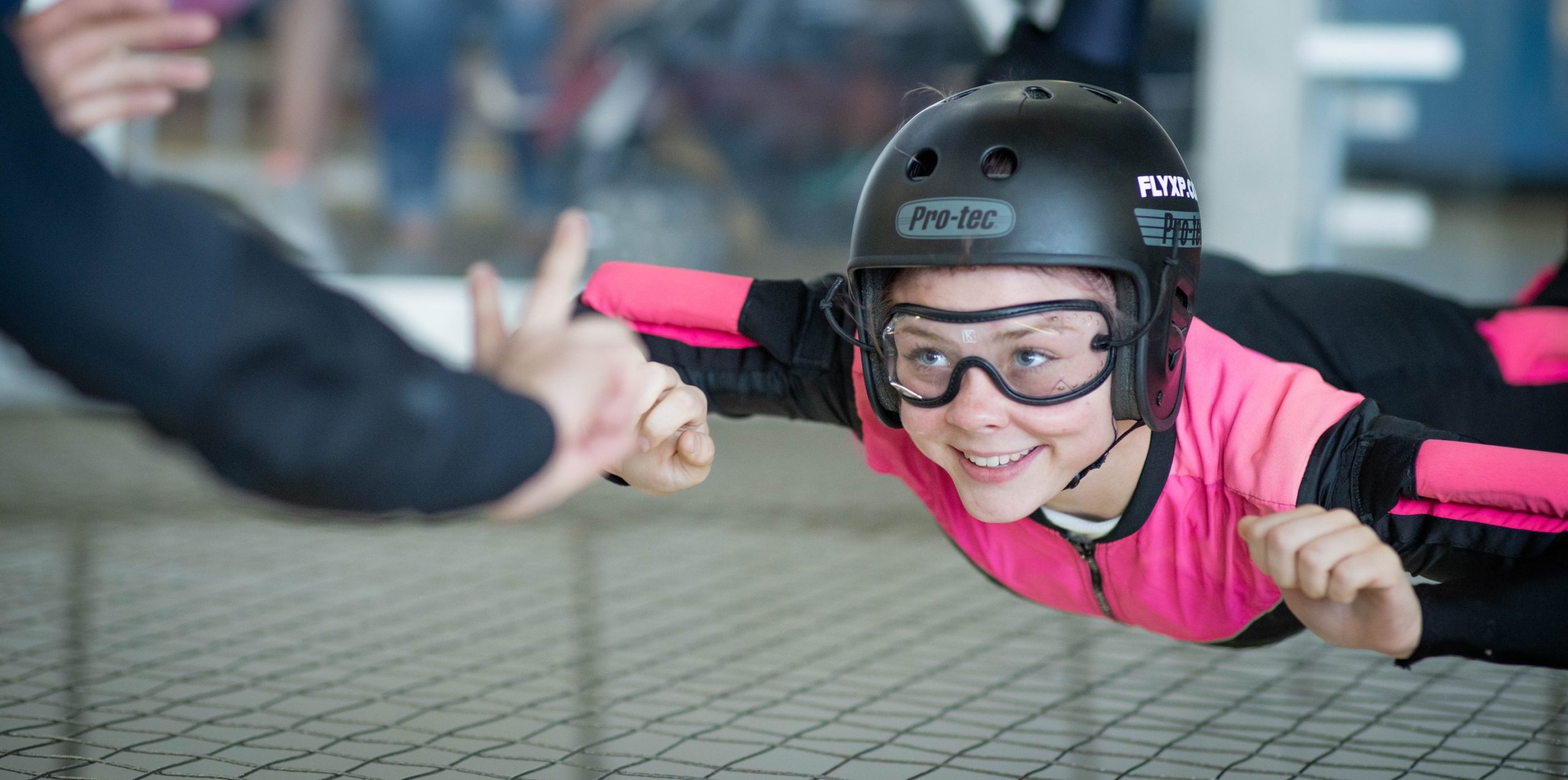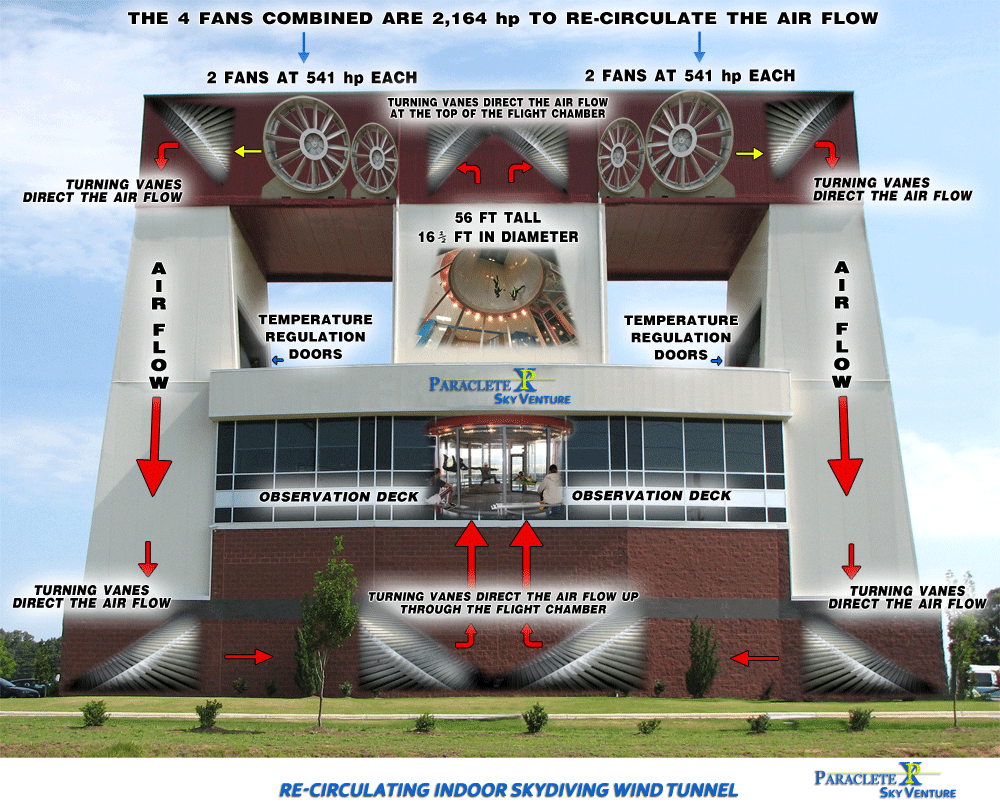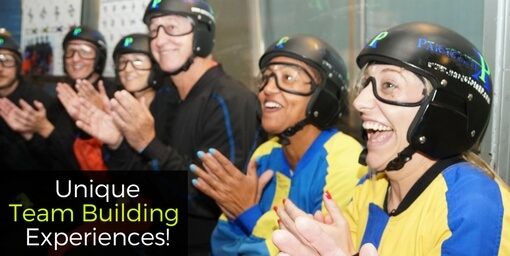Indoor Skydiving as a STEM Learning Experience
Tuesday, February 28, 2023

Looking for a new and effective way to spark your child’s (or students’) interest in learning? Young learners will be pumped to discover that they can have an indoor skydiving field trip and learn about math and physics principles in our very own state-of-the-art, recirculating wind tunnel! Let’s look at the benefits of hands-on learning field trips and at some of the best places for fun field trips (you can guess what’s top of our list)!
Fun Field Trips Are Good For Learning
The purpose of a field trip is to offer students an opportunity to see how topics explored in the school curriculum apply to real-world experiences. Engaging, fun – and especially out-of-the-box – field trips are extremely effective because they offer hands-on experiences that students are genuinely interested in, therefore providing a unique vehicle for information retention.
Not-Your-Average Field Trip Idea
When an educator or parent thinks about the best place for a field trip, some of the top criteria that come to mind include a place that will keep students contained and engaged. Traditional field trip venues in this vein are aquariums, museums, zoos, planetariums, cultural events, and historical buildings. Bonus points are always awarded to the trip that isn’t weather dependent.
A lot of students have been on traditional field trips. They’re cool; we all dug them … but research shows that participation in non-traditional learning opportunities in informal settings yield a greater sense of empowerment and autonomy. What’s more, these experiences can be transformative in myriad ways, including positively affecting academic performance, classroom behavior, and even health and nutrition.
Want to blow your kids’ minds? Consider indoor skydiving as a super-memorable field trip that will check all of the A+ field trip boxes.
Why Indoor Skydiving Is Great For Field Trips
Indoor skydiving provides stellar STEM (science, technology, engineering, and math) learning experiences. Wind tunnel field trips offer an immersive STEM experience, both in the tunnel via bodyflight and out via tunnel design. Let’s look at a few concepts easily explored during this extra-level indoor field trip.
The Physics of Indoor Skydiving
Flying in the wind tunnel almost makes you feel weightless – like you’re defying gravity! What is actually happening is an aerodynamic effect from the wind pushing against you at terminal velocity.
If the wind hits the surface of an object head-on then the object will be pushed directly in the other direction, if it hits at an angle then it will be deflected away at an angle. The object in this case would be your body! The more surface area you present to the wind, the more drag you will get (and you’ll go up) – the less surface area, the less resistance (and you’ll go down).
Here are some physics topics of discussion related to indoor skydiving:
- Types of Force
- Applied
- Gravitational
- Normal
- Frictional
- Air resistance
- Tension
- Spring
- Electrical
- Magnetic
- Force in the Wind Tunnel (Gravity)
- Air Resistance (Drag)
- Acceleration
- Equilibrium
- Terminal Velocity
- Terminal velocity is achieved when the drag force is equal to the force propelling the object. In the wind tunnel, we can begin flying at equilibrium by setting the wind to a certain speed (usually around 120 mph).
- Consider the mass of the falling object, acceleration due to gravity, density of the fluid through which the object is falling, projected area of the object, and drag.
- Newton’s Laws of Motion
- Law 1: Law of Inertia
- Law 2: Force = Mass x Acceleration
- Law 3: For every action, there is an equal and opposite reaction

The Engineering of Wind Tunnels
At Paraclete XP SkyVenture, we currently have the largest vertical wind tunnel in the US in terms of power and size. Our wind tunnel is 16’ 5” in diameter and 53’ tall with 4 fans at 541 horsepower each. The fans are located at the top of the building (with two on each side) and push air down the sides of the building, towards the center of the building, and back up through the flight chamber. This recirculating airflow design allows for an evenly distributed amount of wind through the flight chamber making it less turbulent for a smooth, as close to real, skydiving experience as possible.
A wind tunnel field trip opens the door to numerous curricular connections, including:
- Open Return vs Closed Return Wind Tunnels (Recirculating Air)
- Horsepower
- Turbulence
- Temperature Regulation
Not only is indoor skydiving fun and challenging, but it’s also a great educational experience for people of all ages. Children as young as three years old can go indoor skydiving at Paraclete XP, and there’s no maximum age limit!
Ready to book your next indoor field trip? Book your flight package with Paraclete XP today or check out our youth league to get your little flyer to progress their flying skills and experience all the different ways to fly!
Copyright © 2025, Paraclete XP Indoor Skydiving, All Rights Reserved.
DropZone Web Design & Marketing by Beyond Marketing, LLC
